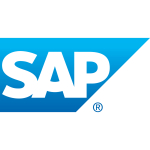
Consultant at a tech consulting company with 51-200 employees
Business Intelligence Forecasting in SQL and Cognos
Note: This article is an update of a presentation given when I was at the University of Oklahoma’s Health Sciences Center. At that time, I was using Cognos version 7.3. This article is updated for Cognos 10 and SQL Server Analysis Server 2012. Revisiting this subject ten years later, my opinion is that Microsoft has finally surpassed IBM Cognos.
Most businesses, including medical clinics, want some method for forecasting business trends. The Cognos BI powerplay presentation tools contain the tools needed for basic forecasting. The trick in getting accurate forecasting is select the correct algorithm.
I recommend trying the model against only a portion of your data, to see how closely forecasts the remaining data. For example, if you have 2 years worth of data, try entering only 18 months of data into the model and let it predict the final 6 months. Then you have some actual data with which to measure ‘fit’ of the prediction. The new Microsoft SQL tools mentioned below, allow training data and measuring fitness.
Forecasting SSAS vs Cognos
IBM Cognos Forecast Models:
The old Cognos website used to list more details about each model, but that has long since been eaten by IBM’s user un-friendly website. I’m sure a few of my friends still enjoy ‘Recreational Math’ magazine, so here are some algorithms to play with in your spare time.

For more details, read about the terms of service and limitations of liability on their forecasting algorithms pages.
Microsoft SQL Analysis Services
If you are using the Microsoft Business Intelligence stack, there are several data mining options in Analysis Services (SSAS). The SQL team has worked hard to lower the barriers to entry and learning curves for data mining. The Excel add-in makes the SSAS data mining models easily accessible to business users at the desktop. I will have more about these tools soon.
Again, for details and limitations, see the Microsoft articles on each algorithm.
Disclosure: I am a real user, and this review is based on my own experience and opinions.
Founder & Principal Architect at a tech services company with 1,001-5,000 employees
Most complete business intelligence suite for the least money
Valuable Features:
Microsoft SSRS is a fantastic means for end users to access, run, and schedule delivery of reports.
- Core functionality is simple to use for business users of all skill levels
- Report models even allow end users to adjust their own reports using a model of your data
- Report builder provides an even easier method for users to build their own reports
- Report data can even be scheduled for periodic delivery with the report data as an attachmentMicrosoft SSAS is one of the best BI suites on the market. It is also one of the least expensive, and the features bundled rival competitors with prices many more times as expensive.
- This feature is one of the most exciting areas of database technologies today
- Very powerful and relatively easy to use when compared to other Bi suites
Room for Improvement:
- Active Directory authentication requires an additional login for users without Internet Explorer
- Learning curve behind any business intelligence package is quite steep
- Price of the SQL Server bundle is potentially cost prohibitive for smaller businesses
Other Advice:
I am quite passionate about the SQL Server suite of tools, and am a fervent user of SSRS. I use SSAS less, only because I am focused more on administration and have not moved into the SSAS space - yet. I am looking to head into the BI arena later on this year, and SSAS is my BI suite of choice!
Disclosure: I am a real user, and this review is based on my own experience and opinions.
Buyer's Guide
Microsoft Power BI
March 2025
Learn what your peers think about Microsoft Power BI. Get advice and tips from experienced pros sharing their opinions. Updated: March 2025.
845,040 professionals have used our research since 2012.
Educator at a university with 11-50 employees
Great teaching tool for data transfers
Pros and Cons
- "Being able to transfer data with the Power Query feature is great for teaching with about one to two hundred rows of data. I am also able to see the relationship between multiple tables and create various sheets and dashboards."
- "The Power Query feature needs to be improved to handle large amounts of data. This feature is also slow for large data transfers making it better to use some kind of script."
What is our primary use case?
I have been a professor at a program mastery at UISEK University for the past two years where I teach students how to use these tools.
What is most valuable?
Being able to transfer data with the Power Query feature is great for teaching with about one to two hundred rows of data. I am also able to see the relationship between multiple tables and create various sheets and dashboards.
What needs improvement?
The Power Query feature needs to be improved to handle large amounts of data. This feature is also slow for large data transfers making it better to use some kind of script.
Additionally, in the next release, I would like to be able to export thing, such as charts, as a PDF.
For how long have I used the solution?
I have been using this solution for two years.
Disclosure: I am a real user, and this review is based on my own experience and opinions.
Managing Partner at a tech services company with 51-200 employees
Great on the cloud, easy to expand, and have a good community around it
Pros and Cons
- "The solution is stable."
- "The cost of the solution can get high."
What is our primary use case?
We use Power BI in cloud solutions in other systems. There are lots of products in our environment that work with Power BI. One use case is we use it to track the real-time sensor data to Power BI using Azure.
We have lots of customers. We make premium subscription projects for them. We have a Tableau portion. We are also Tableau partners and resellers. As a company, we make lots of Tableau projects.
What is most valuable?
The most powerful site of Power BI is the cloud site. You can do everything in power BI. There are lots of things that the solution provides. If you have a huge data warehouse in the cloud, Power BI fits.
In some cases, there are some add-ons that you can put together in Power BI - for example, data factory, data bricks, and also data lakes. Some Microsoft solutions work together and are integrated already. You don't need to worry about that.
If you know what you do, Power BI is a good solution.
The solution is stable.
The product can scale.
What needs improvement?
There are some limitations of Power BI. The front end, for example, is not fancy.
The solution should not be used in some cases.
The cost of the solution can get high.
There is a strong community around the solution that can help users learn about the product and troubleshoot.
When we compare Power BI with other solutions, we can see there are lots of things that should be done. Some things are there, however, they are not working well. Microsoft puts lots of solutions in one place and declares it a complete solution. However, in the practice, you can see that this STK is not working properly or the request is not giving the same results. You discover that when you open a ticket to Microsoft. They will tell you that they are still in development on that product so it will available in the future.
When you use the Power BI as an enterprise solution, as a consultant, you find out that the product is not fully ready for enterprise. In that way, we suffer a lot. That said, every version becomes better.
They need to have an analytics suite of some sort.
For how long have I used the solution?
I've been working with BI solutions for 20 years. I've been using Power BI for two years so far.
What do I think about the stability of the solution?
The product is stable. For one of our customers, there are one thousand clients connecting to the same report. Everyone gets their own results and can search them. It needs more power. It can consume a lot of energy.
What do I think about the scalability of the solution?
The scalability of the product is great. It's on the cloud, which makes it easy to scale.
How are customer service and support?
There are good communities and groups that can help you troubleshoot if necessary.
Which solution did I use previously and why did I switch?
I'm also familiar with Tableau.
We are SAP partners and resellers also. We make lots of SAP business intelligence solutions and do business intelligence projects.
How was the initial setup?
Step-by-step implementation is easy. The difficult part is when you enter the infrastructure site. There are lots of Power BI developers, however, they do not know the other cloud environment. In that way, they can only design the front site. That said, they should know the architecture. They should know the other infrastructure and know the data also. If they do, they can produce lots of things. As an example, Microsoft offers a flow integration so that you can create a data flow that consumes the data and give the results to other services. Also, there are lots of things that you can do, however, you need to know the Azure environment in order to do them.
What's my experience with pricing, setup cost, and licensing?
In some cases, Power BI can be expensive.
What other advice do I have?
We are using the current version of the solution.
I'd advise new users that there are lots of communities and lots of user groups that deal with the product. They should attend them. They should watch the videos about Power BI. It's important to extend your knowledge. If you want to be a Power BI developer, you should also know the other technologies as well.
I'd rate the solution at an eight out of ten.
Disclosure: My company has a business relationship with this vendor other than being a customer: Partner
Director of Analytics and Cognitive Computing at a consultancy with 11-50 employees
Quick chart building tools, responsive technical support, but more attractive charts needed
Pros and Cons
- "The solution is easy to use and charts can be built quickly with the tools."
- "The solution could improve by having more attractive graphical charts."
What is our primary use case?
We use Microsoft BI for dashboards and monitoring tools and dashboards. We mostly use it to produce charts and graphs for our customers.
What is most valuable?
The solution is easy to use and charts can be built quickly with the tools.
What needs improvement?
The solution could improve by having more attractive graphical charts.
For how long have I used the solution?
I have been using Microsoft BI for two and a half years.
What do I think about the stability of the solution?
Microsoft BI has been stable in my usage.
What do I think about the scalability of the solution?
The scalability of Microsoft BI is good.
We have approximately 2,000 users using this solution.
How are customer service and support?
The technical support is very good, they have been available when we needed them.
How was the initial setup?
The installation is straightforward.
What other advice do I have?
My advice to others would be to compare Microsoft BI to all the other similar solutions and see what fits their use case best. If they're looking for nice looking charts then perhaps, they should compare this solution to the others. If you are looking for a solution that is easy to use and quick to learn then Microsoft BI could be the right fit.
I rate Microsoft BI a seven out of ten.
Disclosure: My company has a business relationship with this vendor other than being a customer: Implementer
Senior Data Engineer at a computer software company with 1,001-5,000 employees
Easy to use, quick report generating, and simple installation
Pros and Cons
- "Microsoft BI was very helpful for me because I had a huge variety of connections. It is very convenient to build reports, even if somebody has no experience using BI tools or data visualizations. Additionally, the performance is very good when generating reports."
What is our primary use case?
I used Microsoft BI to develop reports and then deployed them into Microsoft BI web.
What is most valuable?
Microsoft BI was very helpful for me because I had a huge variety of connections. It is very convenient to build reports, even if somebody has no experience using BI tools or data visualizations. Additionally, the performance is very good when generating reports.
For how long have I used the solution?
I have been using Microsoft BI for approximately three months.
What do I think about the stability of the solution?
The stability of the solution has been good.
What do I think about the scalability of the solution?
The solution is scalable.
We have approximately 100 people in my organization using the solution and they are mostly managers.
We used the solution on a daily basis, we were using it extensively.
Which solution did I use previously and why did I switch?
I have used Tableau previously.
How was the initial setup?
The initial setup was very easy to complete and it took approximately 30 minutes.
What about the implementation team?
We did the implementation of the solution using two technicians.
What's my experience with pricing, setup cost, and licensing?
The current licensing model that Microsoft BI has is expensive. My customers have told me the cost is approximately $20 per user and this can get expensive fast. There should be a one-time purchase option if the customer has a lot of users.
What other advice do I have?
I rate Microsoft BI a nine out of ten.
Which deployment model are you using for this solution?
On-premises
Disclosure: I am a real user, and this review is based on my own experience and opinions.
Research & Development Expert at a energy/utilities company with 11-50 employees
Good visualization and graphing functions, integrates with Python
Pros and Cons
- "The most valuable feature is integration with Python."
- "The integration with third-party products could be more stable."
What is our primary use case?
I use Microsoft BI for my own projects that are related to integrating with Excel datasets. I use the visualization and graphing functions, and I have tried using the Python integration.
What is most valuable?
The most valuable feature is integration with Python.
What needs improvement?
The integration with third-party products could be more stable.
For how long have I used the solution?
I have been using Microsoft BI for approximately one month.
What do I think about the stability of the solution?
Microsoft BI could be a little more stable.
What do I think about the scalability of the solution?
We have approximately 10 users. I don't expect that we will expand our usage or continue using this product.
How are customer service and technical support?
I have not been in contact with technical support.
How was the initial setup?
There is no complexity in the initial setup. It takes approximately 15 minutes to deploy.
What about the implementation team?
There are twenty people in the team that handles the deployment and maintenance of our solutions.
What other advice do I have?
In summary, this is a good product and I recommend it.
I would rate this solution a nine out of ten.
Which deployment model are you using for this solution?
On-premises
Disclosure: I am a real user, and this review is based on my own experience and opinions.
Senior Software Engineer - Business Intelligence at a tech consulting company with 51-200 employees
The interactive reports, DirectQuery and integration with the other Microsoft services are valuable features.
What is most valuable?
The interactive reports, DirectQuery and integration with the other Microsoft services are valuable features.
What needs improvement?
There needs to be support for more data sources in DirectQuery.
DirectQuery is a method of connecting your data directly, i.e. any changes in data source will reflect in report immediately. (This is very great feature if you are doing live analysis of your data). As of now there are limited number of Data Sources such as SQL, SQL Azure, which are supported by Power BI with DirectQuery. Although Microsoft keeps working on adding different data sources in DirectQuery (currently only six data sources in this method and three more in Preview), that's why I feel that still DirectQuery (method of connecting your data) has more room for improvement because there are many other data sources that are commonly used by different organization like (MySQL, Access, etc.)
For how long have I used the solution?
I have used this solution for two years.
What do I think about the stability of the solution?
In the beginning, we did encounter some stability issues; now, Microsoft is doing great things to make this product more stable and enhanced.
Which solution did I use previously and why did I switch?
We were using SQL Server Reporting Services (SSRS reports), now we are moving towards Power BI due to its Publish on web part, as well as the interactive cross-filtering throughout all the visuals (i.e., if you need).
How was the initial setup?
The setup is easy. It is very easy to use. If you are an Excel and SQL user, then it is very easy to get a grip on this product.
Which other solutions did I evaluate?
We tried Tableau. Although Tableau itself is a great product, we chose Power BI due to its pricing and Microsoft's focus to make it a better product.
Disclosure: My company has a business relationship with this vendor other than being a customer: We are Microsoft Gold Partners.
Buyer's Guide
Download our free Microsoft Power BI Report and get advice and tips from experienced pros
sharing their opinions.
Updated: March 2025
Popular Comparisons
Teradata
Amazon QuickSight
IBM Cognos
SAP Analytics Cloud
SAP BusinessObjects Business Intelligence Platform
Oracle OBIEE
MicroStrategy
Oracle Analytics Cloud
Salesforce Einstein Analytics
TIBCO Spotfire
ThoughtSpot
Buyer's Guide
Download our free Microsoft Power BI Report and get advice and tips from experienced pros
sharing their opinions.
Quick Links
Learn More: Questions:
- BI Reports for business users - which BI solutions should we choose?
- Business users moving from Tableau to MS Report builder
- Is Power BI a complete platform or only a visualization tool?
- What are the key advantages of OBIEE compared to Microsoft BI?
- What Is The Biggest Difference Between Microsoft BI and Oracle OBIEE?
- Is Microsoft Power BI good for an ETL process?
- How would you decide between Microsoft Power BI and TIBCO Spotfire?
- Is it easy to extract data from Oracle Fusion into Power BI?
- PowerBI or SyncFusion - which is better?
- What challenges to expect when migrating multiple dashboards from TIBCO Spotfire to Microsoft Power BI?















Hi Kleegeek !
Nice to read your review, while I was reading it I noticed some of the points which you might still not be aware of. Let’s analyze those;
SSRS: SSRS is a good reporting tool, but mostly it is used for static reporting, detail level reports, it doesn't provide the ability to dynamic dashboard with drill up / drill down options unless you define Action Item for each text box.
Microsoft provides Dynamic Dashboard with PPS or Power View where End-User can change the layout of the dashboard or grid on the fly, add different measures at rum time.
SSAS: The biggest selling point of Microsoft BI is its powerful Multidimensional Model, some of us known it as "Cube". With a craftily designed OLAP Model you can leverage the End-User to perform deep data analysis.
I would like to disagree with you on the point, that cost is the only selling factor or Microsoft BI, because QlikView and Tableau are both very cheap if you compared them with Microsoft BI, and they both provide nice dashboard and charts.
The selling point of Microsoft BI is its architecture and ability to handle the needs of enterprise requirements. In smaller industries QlikView and Tableau gives really tough time on pricing.
Regards,
Hasham Niaz